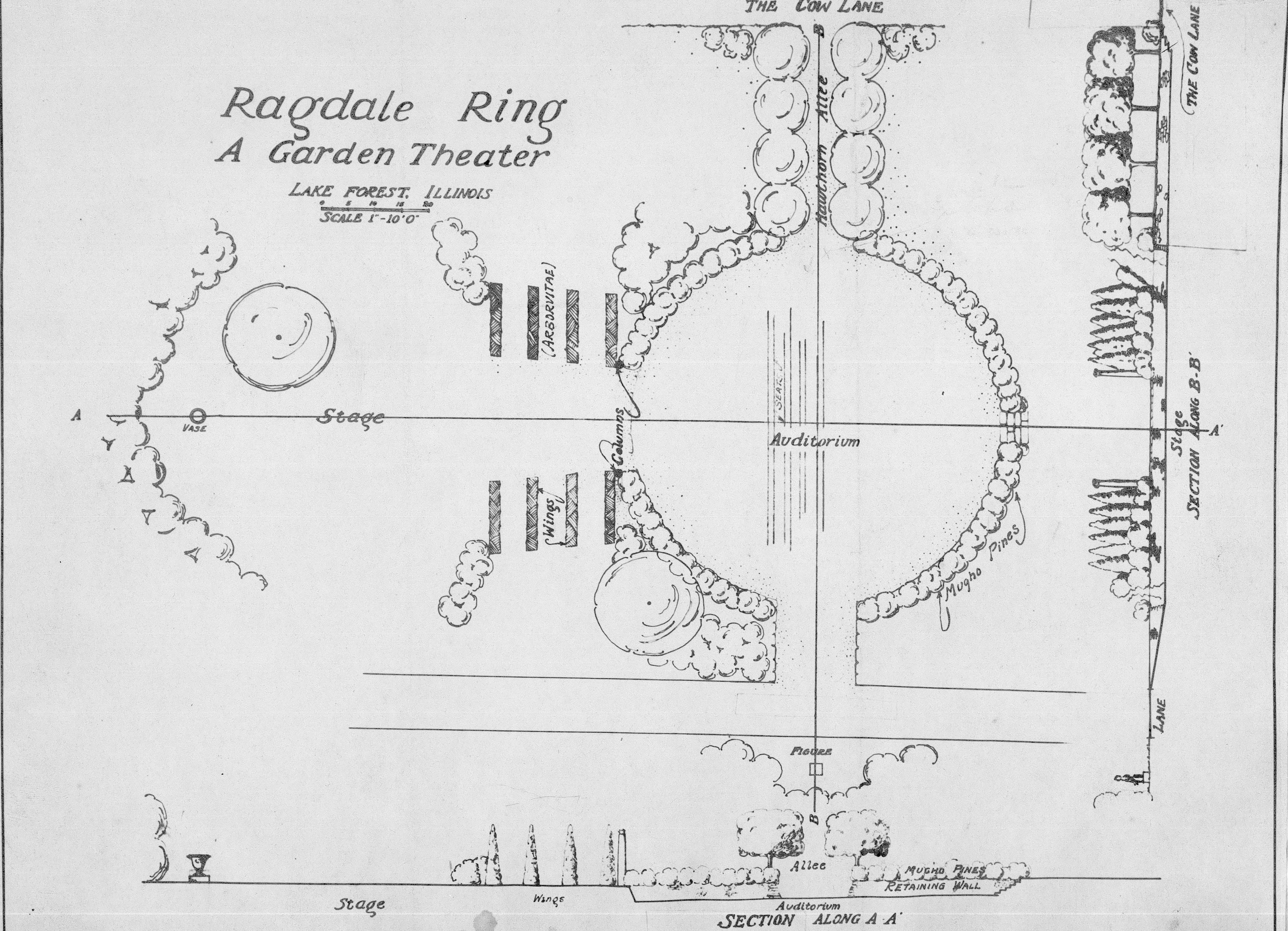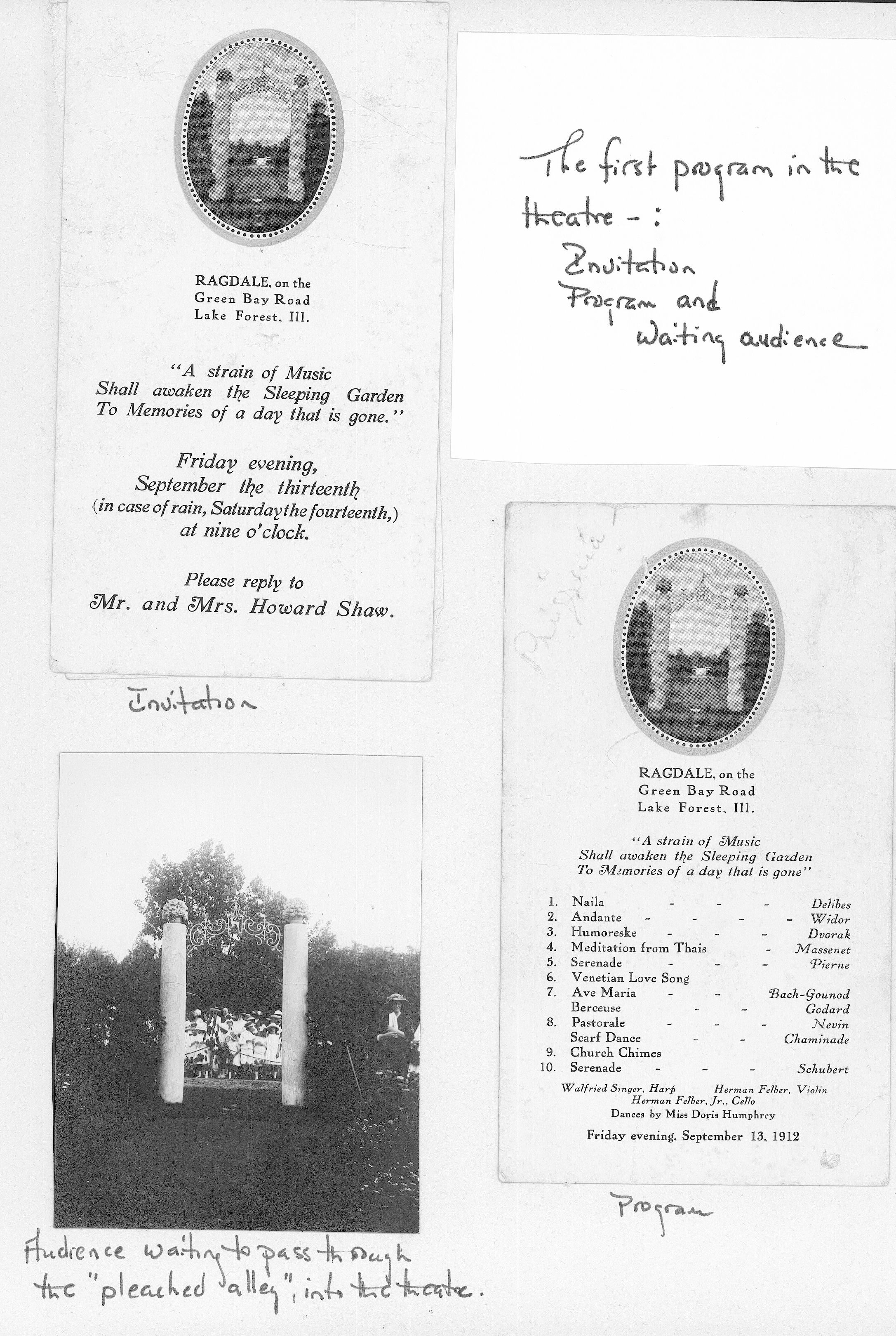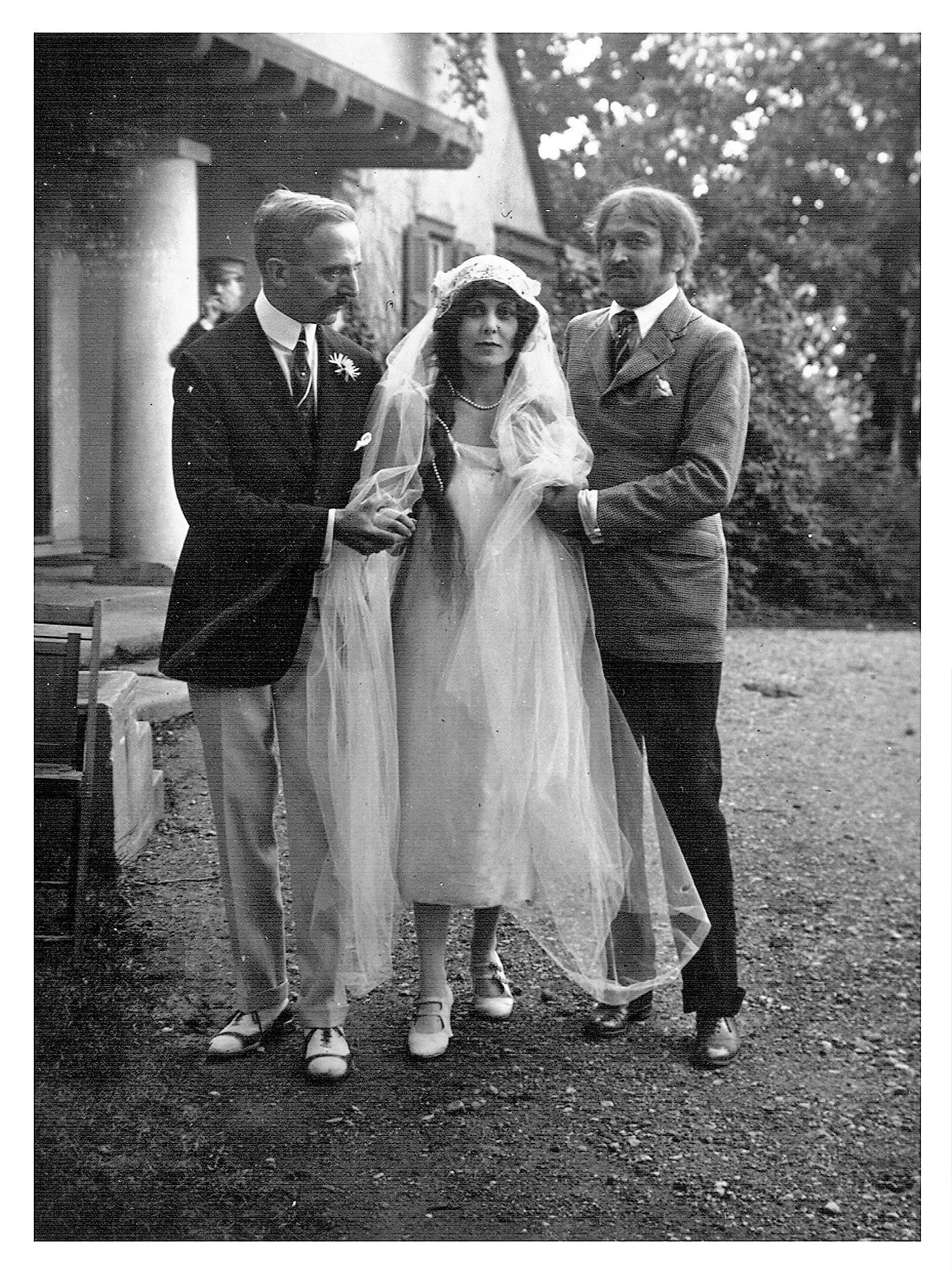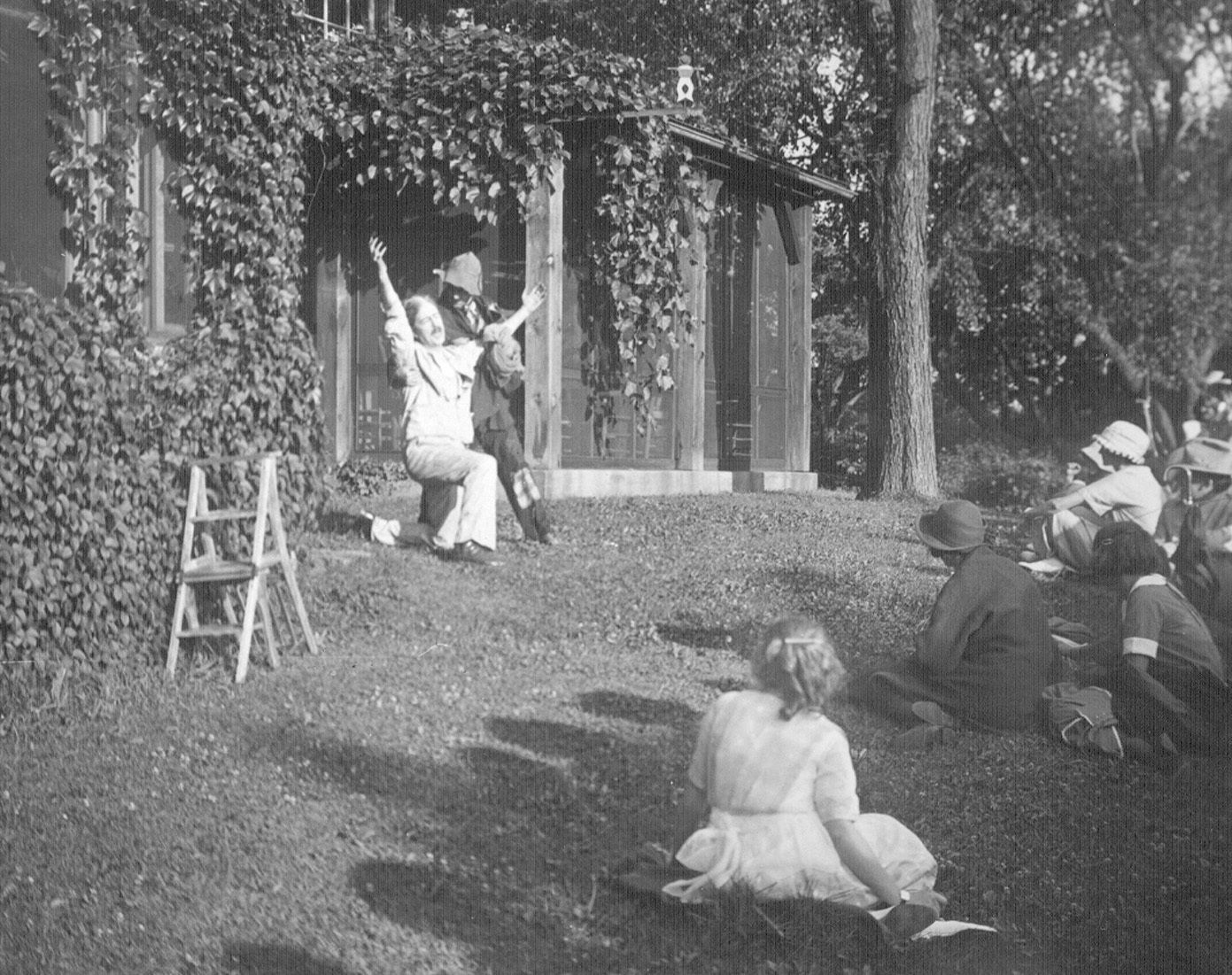In "Play"n Air: The Ragdale Ring

Plays written and adapted by poet and playwright Frances Shaw were performed at her Lake Forest home, Ragdale, by family members and friends. In 1912, her husband, architect Howard Van Doren Shaw, designed an outdoor theater for these performances known as the Ragdale Ring.
Frances Shaw recalled in 1921:
“It was my fate to wake up one morning to find myself in full possession of an Out-of-Door Theatre! I had known for several years that something had been going on in the rough pasture north of the cow-lane….Suddenly, one year, I was told by the creator of this mechanism that it was ready, and that we must produce, before an audience of some 250 people, something pleasing, original and ‘not too expensive.’ He said that we had better plan to give it two weeks from that day.”

The Ragdale Ring was based on a theater Shaw had seen at the Villa Gori outside Siena, Italy, in 1907. The audience sat in a circular orchestra paved with grass and surrounded by a low limestone wall. The stage was at the level of the top of the wall, with evergreens forming wings for entrances and exits. On both sides of the stage stood columns topped with baskets of stone fruit.

In addition to designing the sets, Howard Van Doren Shaw designed the benches that guests sat on. They were painted in blue to match the trim on the house. Banners and Japanese lanterns were hung around the theater.

The first play performed in the theater was A Garden Drama in 1912 with the children dressed as vegetables. Among the actresses was a young Ginevra King.

Frances Shaw’s play The Heir of Manville Grange was performed in 1909 and 1922. The house and grounds were used for scenes of this peripatetic drama. A local paper reported that “it had the very smartest set on the North Shore ‘on its feet, literally’ (because the play moved around the property). One scene took place among the hollyhocks. A storm washed all the petals off and Mrs. Shaw’s sister tied hundreds of paper hollyhocks blossoms onto the stems. The fake flowers were a sensation with the Garden Club.

Pictured kneeling (below) is cartoonist John T. McCutcheon, husband of Shaw's daughter Evelyn; he played a Tramp.The play was about a villainous cousin’s attempt to steal the sweetheart and fortune from his honored kinsman. The performance raised funds for Alice Home Hospital.

The Ragdale Ring brought together the various arts of drama, poetry, dance, gardening and set design. In 2013 the Ragdale Foundation launched an annual international competition for artists, architects and designers to reinterpret the Ragdale Ring - to design a temporary performance venue and gathering place in the spirit of the original.
